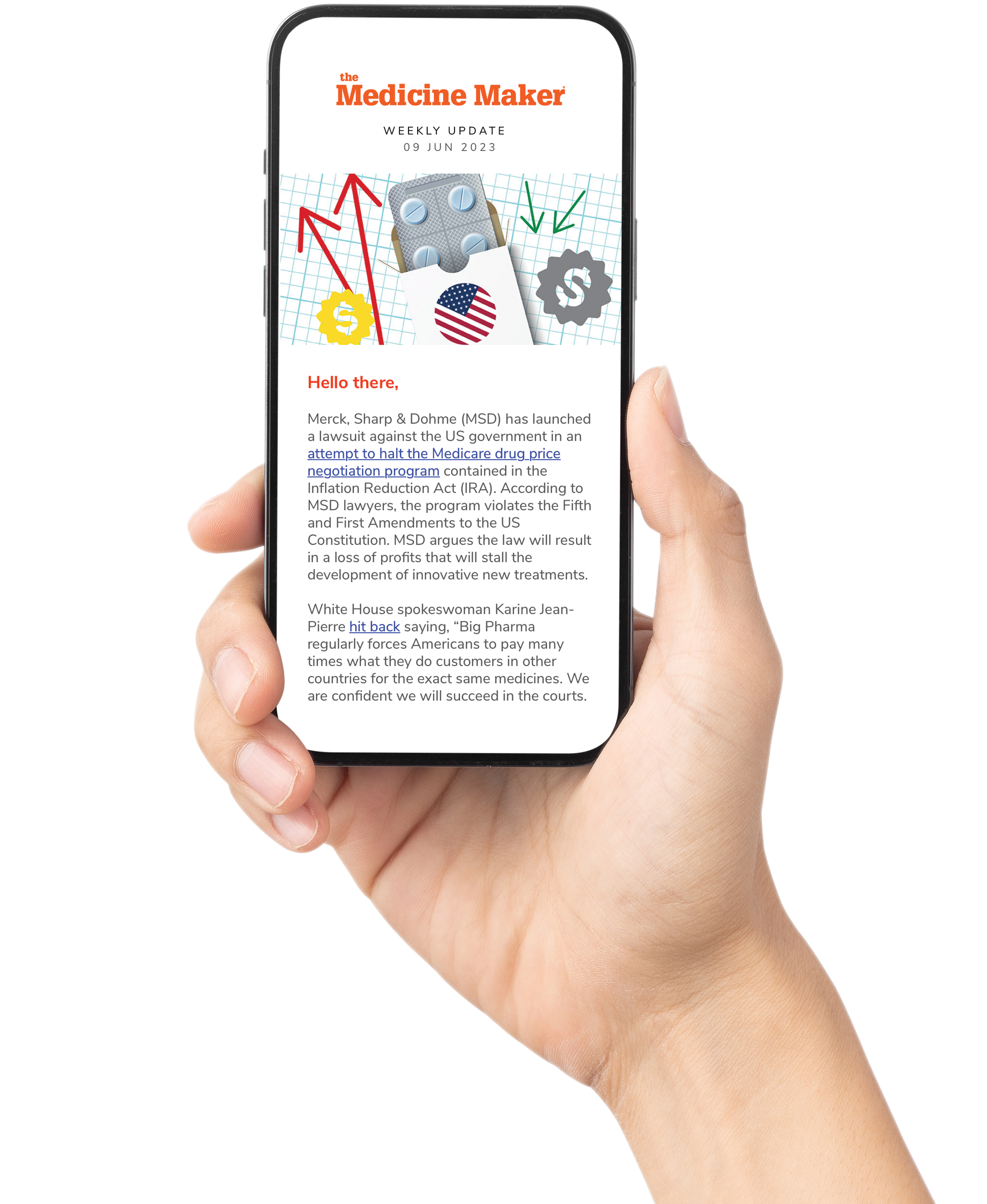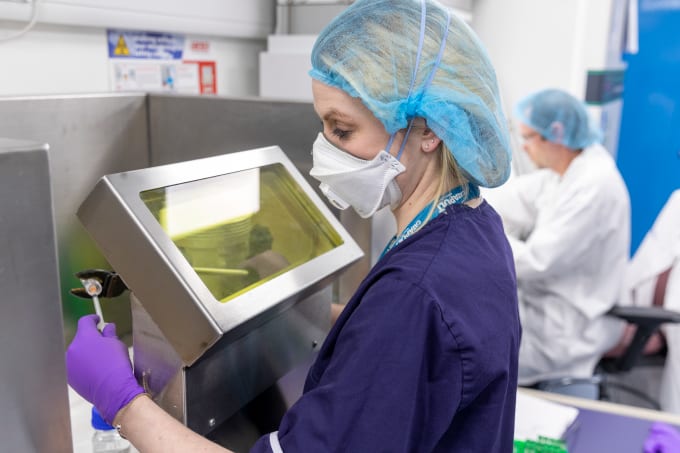
A medical marvel, ubiquitous lifesaver and poster child for the importance of rigorous pharmaceutical standards: heparin has become a vital ingredient in the health industry since its discovery just over a century ago. A complex polysaccharide derived from biologically-derived tissue, heparin is credited with saving more than 100 million lives per year – giving it an undisputed place among the most valuable therapeutic agents discovered to-date.
Although the ascent has been steep, however, heparin production has faced challenges – the largest of which was the tragic contamination crisis of the late 2000s. Since the COVID-19 pandemic, pharmaceutical safety and transparency of supply has once again been in the headlines. I believe that heparin’s past, present and future offer an especially relevant case study.
Heparin – a vital raw material
Discovered more than 100 years ago in 1916, heparin has become a keystone for antithrombotic therapies and remains the oldest anticoagulant still in use today. Heparin and its derivatives work by targeting and binding antithrombin III (AT). Through this action, the molecule boosts the function of AT – blocking key players in the blood coagulation cascade, such as factor XA and thrombin. This slows or completely stops the clotting process, preventing unwanted thrombosis in its tracks, which is useful during surgery and in treating certain conditions.
Because of its unique mechanism, heparin has been crowned as an ‘essential medicine’ by the World Health Organisation – making this remarkable molecule nothing short of a powerhouse in the medical world. But to harness the full benefits of this complex therapeutic agent, it must be well-understood – both in terms of its intricate structure and the risks it poses.
Heparin is inherently natural – primarily sourced from pigs and cows. It is not a single compound, but a heterogenous mixture of sulphated polysaccharides with variations in molecular weight, charge distribution and biological activity. Its complex structure is what makes heparin molecules difficult to replicate synthetically and is the reason why biologically derived heparin remains the preferred choice for drug developers. Achieving consistent quality and optimal bioavailability of the final drug product, however, is extremely challenging.
Heparin consists of long, sulphated polysaccharides (specifically glycosaminoglycan chains) with variations in chain length and sulphation patterns. This complexity in the structure makes it challenging to ensure batch-to-batch consistency. In addition, because it is sourced from animal tissues, natural biological variation in heparin is inevitable. To uphold the quality of the ingredient, careful control of the molecular structure is required. This can be achieved through a standardization process that ensures the molecular weight, sulphation pattern and potency of heparin matches a defined standard compliant with regulatory requirements.
Heparin is also sensitive to numerous environmental factors such as pH, temperature and enzymatic degradation. Its polyanionic nature makes it prone to interactions with other proteins and excipients too, which ultimately impacts stability in formations. The choice of heparin significantly affects dosing, administration and even clinical use of the ingredient because the molecule’s pharmacokinetics (and therefore bioavailability) depend on molecular weight and charge. Low-molecular-weight heparins (LMWH) exhibit very different absorption, distribution and clearance profiles versus unfractionated heparin (UFH), for instance. It takes specialist expertise and validated methods to characterize the molecule – and its properties – in different formulations. Several procedures can be applied to support with this, including heparin identification to confirm structural integrity and composition, bioactivity measurement and molecular weight distribution analysis.
Raw materials can pass through multiple companies before heparin production even begins. Choosing a heparin supplier that has a direct connection to the raw materials and complete control over the supply chain is important to maintain traceability, freshness and quality from the start.
Learning from contamination tragedy
Because of its animal-derived origins, heparin carries a potential risk of contamination with impurities, infectious agents or allergens – which is why control over the supply chain and trust in your supplier is crucial.
In the early 1990s, bovine spongiform encephalopathy (BSE) breakouts in cattle raised global concerns about the use of bovine tissues for pharmaceuticals – like heparin – because of potential risks of transmitting neurodegenerative diseases to humans. As a precautionary measure, regulatory agencies worldwide discouraged or banned bovine-derived therapies from regions affected by BSE. At the time, this led to a sharp decline in the use of bovine heparin and the global industry shifting almost entirely to porcine (pig) heparin, which was considered a lower risk for BSE transmission.
However, heavy reliance on porcine heparin exposed major vulnerabilities in the global heparin supply chain – highlighted by the 2008 heparin scandal, which is still considered one of the most significant pharmaceutical safety incidents in modern medicine. Heparin in China was intentionally adulterated with over-sulphated chondroitin sulphate (OSCS), leading to fatal reactions and even deaths in patients. OSCS mimics the structure of heparin and easily passed standard quality control tests used at the time, making it difficult to detect. With heavy reliance on Chinese suppliers for crude heparin in those days, the incident created a significant bottleneck in the supply chain.
Lessons have been learned. The incident drove major improvements in heparin production and supply, including:
Stronger quality controls. More sophisticated analytical and purification testing methods were introduced to detect OSCS and other contaminants and ensure final heparin products were safe for medical use.
Tighter regulations. The FDA and EMA increased audits and inspections of global heparin suppliers.
Diversification of supply. The industry made moves to reduce reliance on a single geographic region or heparin source. In fact, in 2020 the FDA approved bovine heparin for pharmaceutical use in the US again (the first time in decades), with strict sourcing and manufacturing controls in place to prevent contamination.
Better traceability. Suppliers must provide detailed records of sourcing, processing and testing.
Managing supply stability concerns
While synthetic ingredients can be produced consistently in a lab setting, heparin is not, which makes it vulnerable to higher risk of supply fluctuations. Large volumes of starting material are needed to obtain heparin, but the raw material used to extract or produce the target molecule can be significantly affected by factors such as climate, natural disasters, disease outbreaks or environmental changes. Any disruptions can impact production schedules and supply chain stability, and ultimately patient access.
How can this be managed? Having access to a variety of raw materials reduces reliance on a single source, and therefore minimizes risks associated with disruptions. Partnering with a supplier that sources globally, for example, enables access to raw materials from multiple regions, rather than depending on one specific herd or country. Suppliers that have oversight of the entire supply chain – from raw material collection to final product – and don’t rely on third-party vendors can also offer maximum supply chain control. For example, suppliers that utilize a vertically integrated supply chain can support with tracking of the heparin origin and production process.
In a unified supply chain, the heparin producer will have oversight of raw material collection (ensuring no mixing of species) and transportation of the material, all the way through to purification of the heparin to minimise the possibility of biological risk. Such a supply chain also brings flexibility to adapt quickly to market demand, supply chain disruptions or even regulatory changes.
The Sustainability of Heparin
There is a prevailing belief that animal-sourced ingredients such as heparin lack sustainable credentials. So, with sustainability becoming a key focus for the healthcare and pharmaceutical industries, how can this be addressed?
The careful selection of an ingredient partner that respects the health of the planet and has robust sustainability initiatives in place will help to minimize environmental harm. In the case of heparin, sustainable sourcing practices, waste reduction and ethical treatment of animals – including sourcing from certified farms and compliance with animal welfare standards – are key considerations when selecting a supplier.
Even today, ongoing studies into heparin continue to reveal new potential. Being a negatively charged biopolymer, heparin can interact with a wide variety of proteins in the body – not just those linked to the blood coagulation process – sparking a whole host of biological activities that go beyond blood clotting. And scientists continue to uncover a world of non-anticoagulant potential. From exploring heparin’s potential role as an anti-cancer agent, to protecting against angiogenesis (blood vessel formation), atherosclerosis (the build-up of plaque in the arteries leading to heart disease), and even viruses and malaria, research is ongoing to identify new applications for heparin beyond thrombosis (1, 2, 3).
As we mark a century since heparin’s discovery, we can reflect on the important lessons learned and how this molecule continues to save patient lives. Heparin has endured as a life-saving medication, and looking ahead, the future for heparin and its derivatives is bursting with new opportunities.
References
- G Cassinelli, A Naggi, “Old and new applications of non-anticoagulant heparin,” International Journal of Cardiology, 212 (2016). Doi: 10.1016/S0167-5273(16)12004-2 G Torri, A Naggi, “Heparin centenary – an ever-young life-saving drug,” International Journal of Cardiology, 212 (2016). Doi: 10.1016/S0167-5273(16)12001-7 J Harenberg, “Past, present, and future perspectives of heparins in clinical settings and the role of impaired renal function,” International Journal of Cardiology, 212 (2016). Doi: 10.1016/S0167-5273(16)12003-0




